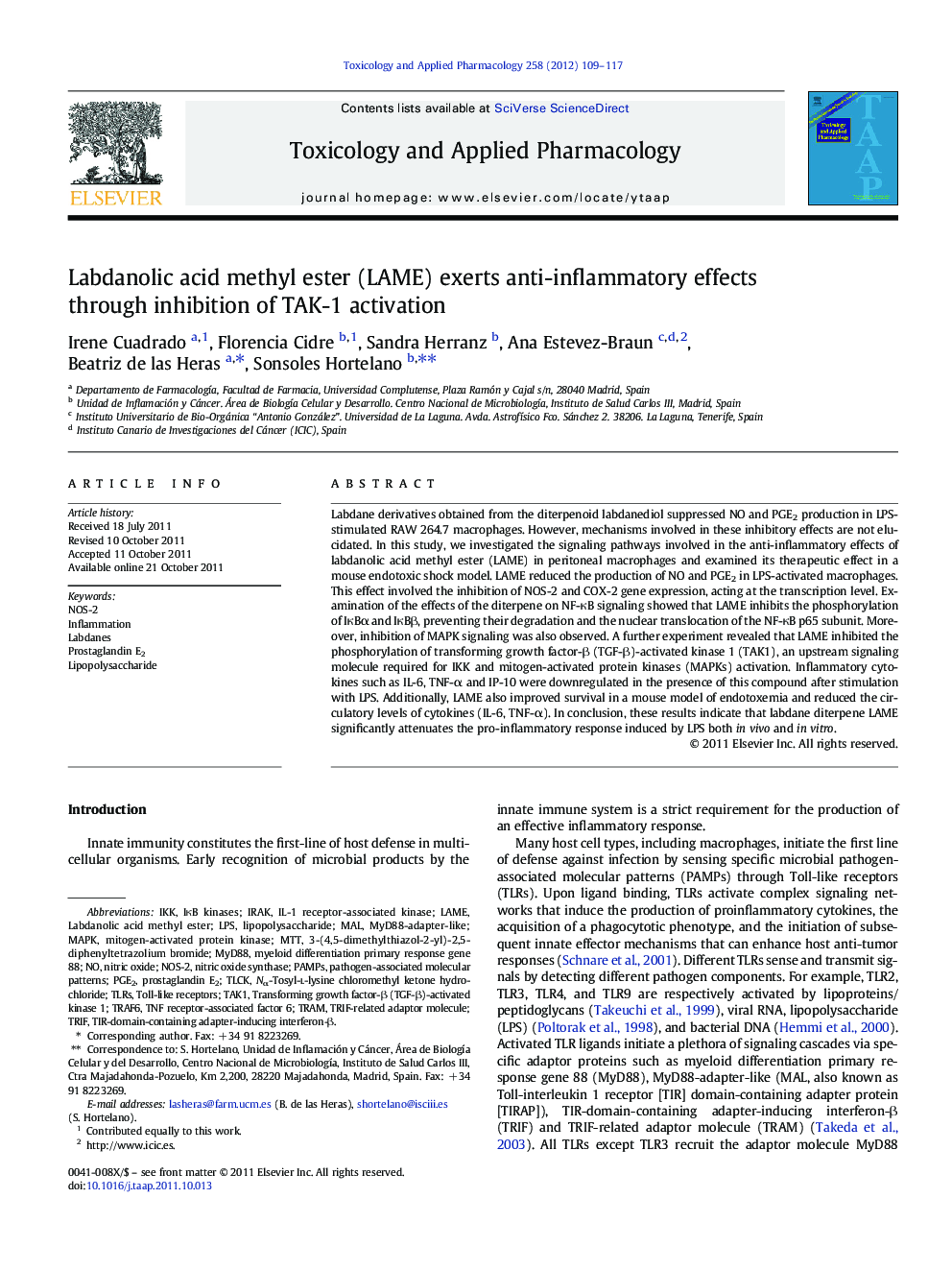| Article ID | Journal | Published Year | Pages | File Type |
|---|---|---|---|---|
| 2569412 | Toxicology and Applied Pharmacology | 2012 | 9 Pages |
Labdane derivatives obtained from the diterpenoid labdanediol suppressed NO and PGE2 production in LPS-stimulated RAW 264.7 macrophages. However, mechanisms involved in these inhibitory effects are not elucidated. In this study, we investigated the signaling pathways involved in the anti-inflammatory effects of labdanolic acid methyl ester (LAME) in peritoneal macrophages and examined its therapeutic effect in a mouse endotoxic shock model. LAME reduced the production of NO and PGE2 in LPS-activated macrophages. This effect involved the inhibition of NOS-2 and COX-2 gene expression, acting at the transcription level. Examination of the effects of the diterpene on NF-κB signaling showed that LAME inhibits the phosphorylation of IκBα and IκBβ, preventing their degradation and the nuclear translocation of the NF-κB p65 subunit. Moreover, inhibition of MAPK signaling was also observed. A further experiment revealed that LAME inhibited the phosphorylation of transforming growth factor-β (TGF-β)-activated kinase 1 (TAK1), an upstream signaling molecule required for IKK and mitogen-activated protein kinases (MAPKs) activation. Inflammatory cytokines such as IL-6, TNF-α and IP-10 were downregulated in the presence of this compound after stimulation with LPS. Additionally, LAME also improved survival in a mouse model of endotoxemia and reduced the circulatory levels of cytokines (IL-6, TNF-α). In conclusion, these results indicate that labdane diterpene LAME significantly attenuates the pro-inflammatory response induced by LPS both in vivo and in vitro.
Graphical abstractFigure optionsDownload full-size imageDownload high-quality image (93 K)Download as PowerPoint slideHighlights► LAME reduced the production of NO and PGE2 in LPS-activated macrophages. ► IL-6, TNF-α and IP-10 were also inhibited by LAME. ► Inhibition of TAK-1 activation is the mechanism involved in this process. ► LAME improved survival in a mouse model of endotoxemia. ► LAME reduced the circulatory levels of cytokines (IL-6, TNF-α).
